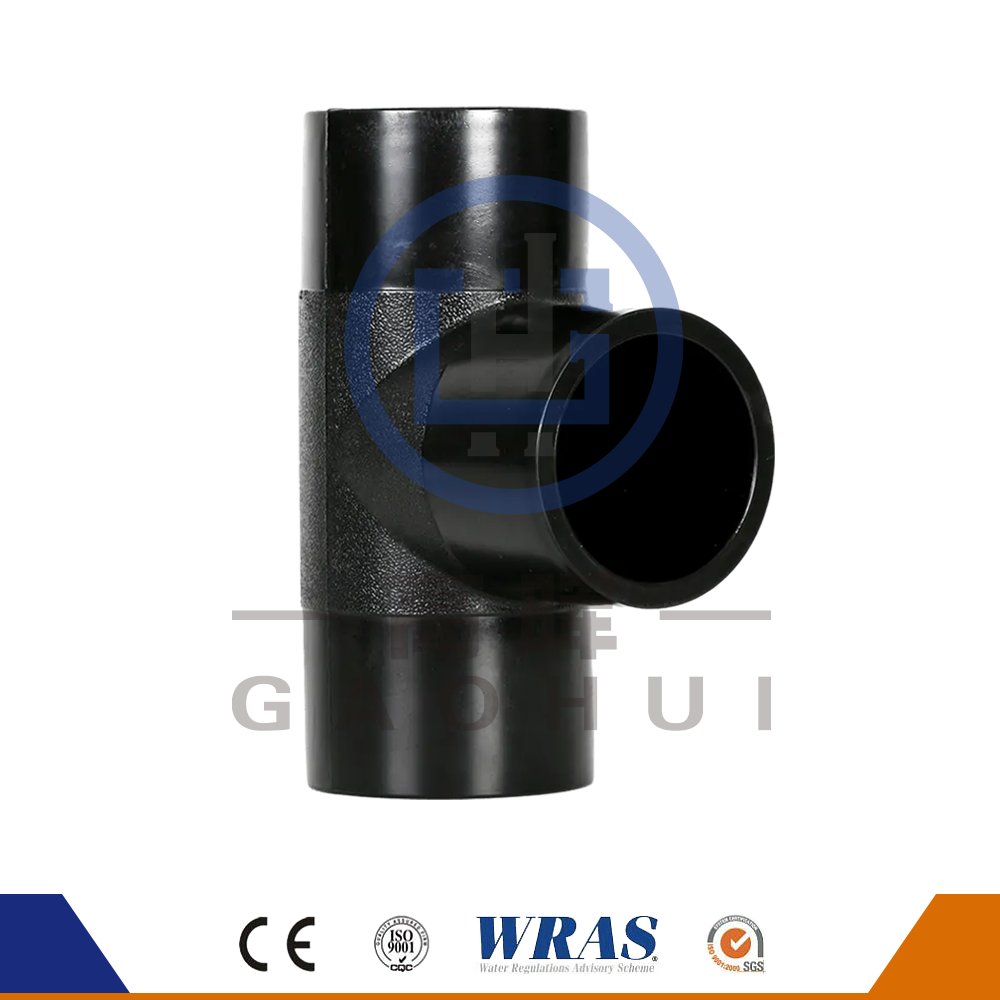Content
With the continuous advancement of global infrastructure construction, pipeline systems are increasingly used across various industries. From water and gas supply to oil and gas transportation, pipeline systems must not only withstand long-term, intensive use but also face complex operating environments, requiring their joints to be highly durable and safe. As one of the core technologies for modern pipeline connection, HDPE transition fittings, with their performance, have become a key component in ensuring the stable operation of pipeline systems.
Why HDPE Transition Fittings Improve Pipeline Connection Durability
Pipeline durability directly impacts the long-term stability and safety of the system. Especially in complex operating environments, piping systems may be subject to severe challenges such as temperature, pressure, and corrosion. HDPE transition fittings, through their unique material advantages and sophisticated design, significantly improve the durability of pipe connections.
Corrosion Resistance of HDPE
In pipeline systems, corrosion is often one of the main causes of pipeline damage and leakage. Traditional metal pipe connection components are susceptible to corrosion from factors such as acids, alkalis, salts, and climate change. HDPE (high-density polyethylene) is highly corrosion-resistant and can operate reliably and long-term in a variety of harsh environments. Whether used for sewage pipes, chemical liquid pipelines, or underground pipelines, HDPE transition fittings effectively prevent damage caused by corrosion, thereby improving the durability of pipe connections.
HDPE transition fittings can seamlessly connect to pipes made of various materials, including steel and PVC pipes. Their corrosion resistance protects the pipe joints from external corrosive factors, significantly improving the durability of the piping system and reducing corrosion-related failures and repair costs.
High and Low Temperature Resistance
Systems such as water and gas pipelines often operate in environments with large temperature fluctuations. Traditional piping materials tend to expand and deform at high temperatures, while becoming brittle and cracking at low temperatures. HDPE, on the other hand, offers high and low temperature resistance, maintaining its physical properties over a wide temperature range, from -40°C to 60°C.
HDPE transition fittings, with their unique thermal expansion resistance, effectively prevent joint loosening or deformation caused by high temperatures. Furthermore, even at low temperatures, HDPE remains tough and resistant to brittle cracking. HDPE transition fittings can operate stably for extended periods in both cold and high temperatures, significantly enhancing the durability of piping systems.
High Strength and Toughness, Withstanding High Pressure
In addition to corrosion and temperature resistance, HDPE transition fittings also possess exceptional strength and toughness. HDPE, a high-density polyethylene material, possesses exceptional compressive strength and can withstand significant external pressure. In high-pressure pipeline systems, HDPE transition fittings effectively prevent damage to pipe joints caused by excessive pressure, significantly enhancing the durability of the piping system.
In particular, in industrial pipeline systems such as oil and natural gas, which often transport high-pressure liquids or gases for extended periods, HDPE transition fittings, with their strength and toughness, ensure stable pipe connections and prevent bursts or leaks caused by excessive pressure.
Reducing Pipeline Wear and Fatigue
In pipeline systems, the continuous flow of liquids or gases often causes wear on the inner walls of the pipes. This is particularly true at joints, where wear is particularly severe due to factors such as fluid turbulence and vibration. HDPE transition fittings can effectively reduce friction at pipe joints, minimizing wear and fatigue.
HDPE's low coefficient of friction allows transition joints to smoothly contact the pipeline fluid, reducing frictional losses caused by the flow of liquids or gases within the pipeline. Furthermore, the toughness and ductility of HDPE allow the joints to adapt to minor deformations during long-term pipeline operation, extending the service life of the pipe joints.
Why HDPE transition fittings improve pipeline connection safety
The safety of pipeline systems is crucial to public safety and environmental protection. Especially when handling hazardous chemicals, oil, and gas pipelines, the safety of joints is particularly important. HDPE transition fittings offer irreplaceable advantages in improving pipeline connection safety.
High Sealing Performance, Leak Prevention
Leaks at pipe joints are often the root cause of safety incidents, especially in pipeline systems transporting flammable and explosive gases or toxic chemicals. HDPE transition fittings feature a high-sealing design, ensuring a complete seal at the joint, preventing liquid or gas leaks and potentially posing a threat to the environment or personnel.
HDPE transition fittings utilize precision threading or crimping technology to connect pipes of different materials, resulting in a tighter connection and improved sealing. This prevents leaks caused by loose joints during operation and ensures the safety of the entire pipeline system.
Vibration and Shock Resistance
In some special applications, pipeline systems must withstand significant vibration and impact. For example, pipelines in busy urban underground pipelines, industrial pipelines, and pipelines in mines are often subject to external shock and vibration. If the pipe joint components lack sufficient shock resistance, the joints may loosen or rupture, creating safety hazards.
HDPE transition fittings offer high vibration and shock resistance, effectively protecting against the effects of external shock and vibration. Its toughness and elasticity effectively mitigate the effects of external forces on joints, preventing damage from vibration or impact, and ensuring the long-term safe operation of the pipeline system.
Reducing the Risk of Human Error
During pipeline installation, operator error is a common factor cause loose connections. Traditional metal joints can leak or loosen due to improper welding or insufficient thread tightening. HDPE transition fittings, on the other hand, are relatively easy to install and utilize standardized crimping or threaded connections, reducing the risk of human error and ensuring a secure and secure connection.
Aging and UV Resistance
Prolonged exposure to the environment can cause damage from UV radiation, oxidation, and other factors, causing material degradation and compromising pipeline safety. HDPE has strong UV resistance and is not easily damaged by UV rays, nor does it lose strength and toughness due to environmental oxidation. HDPE transition fittings maintain their original performance over time, reducing pipeline safety incidents caused by material aging.


 English
English русский
русский عربى
عربى











